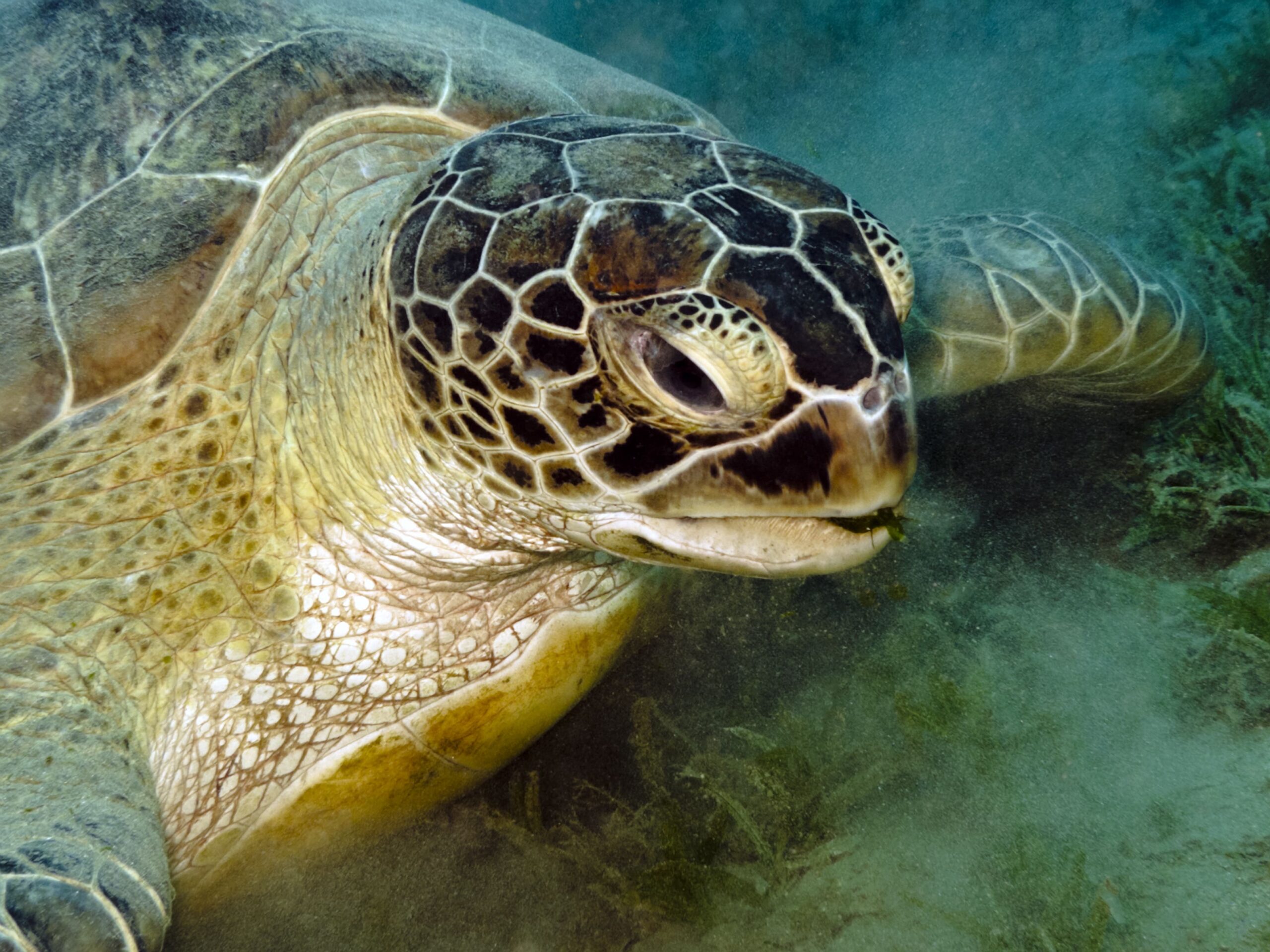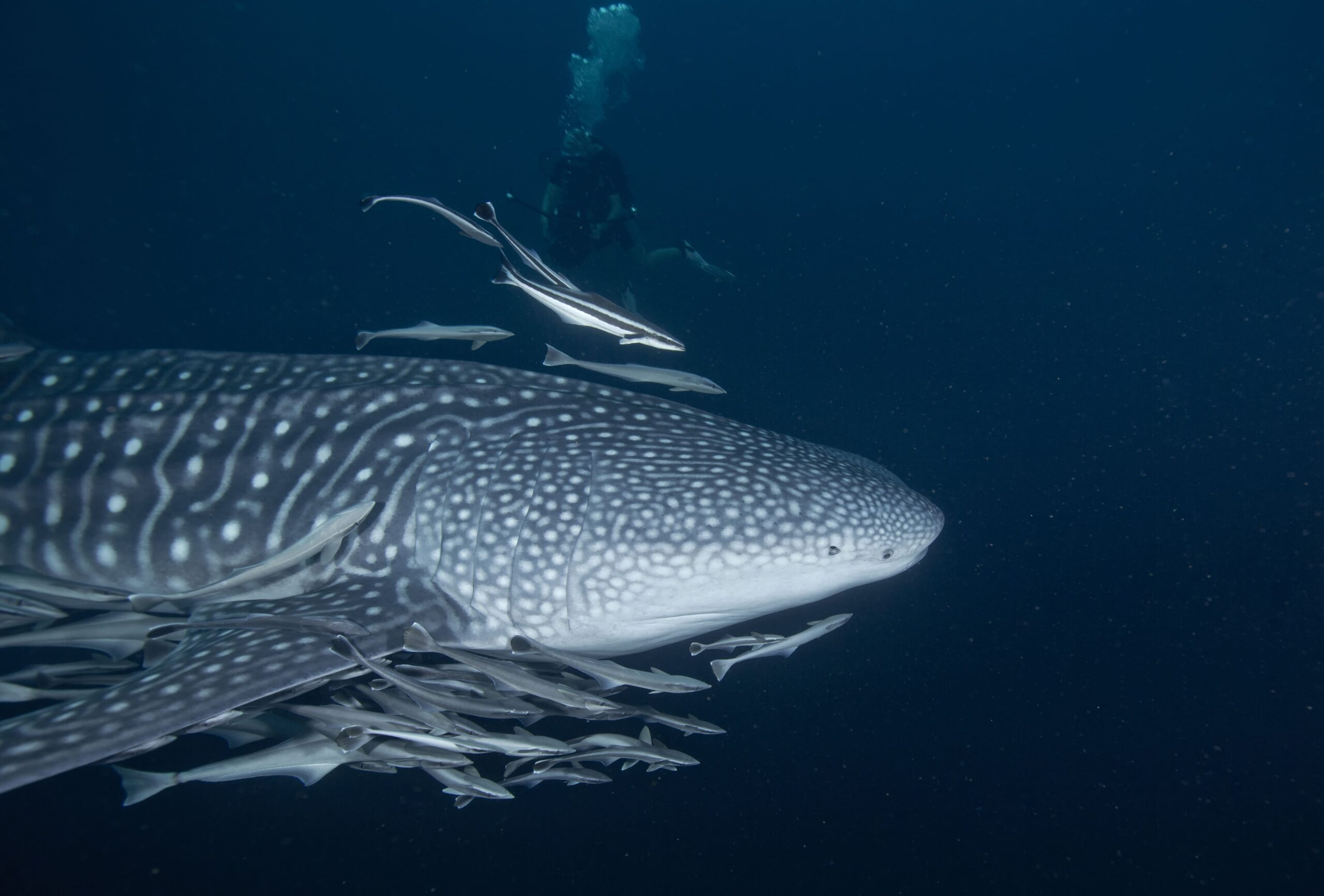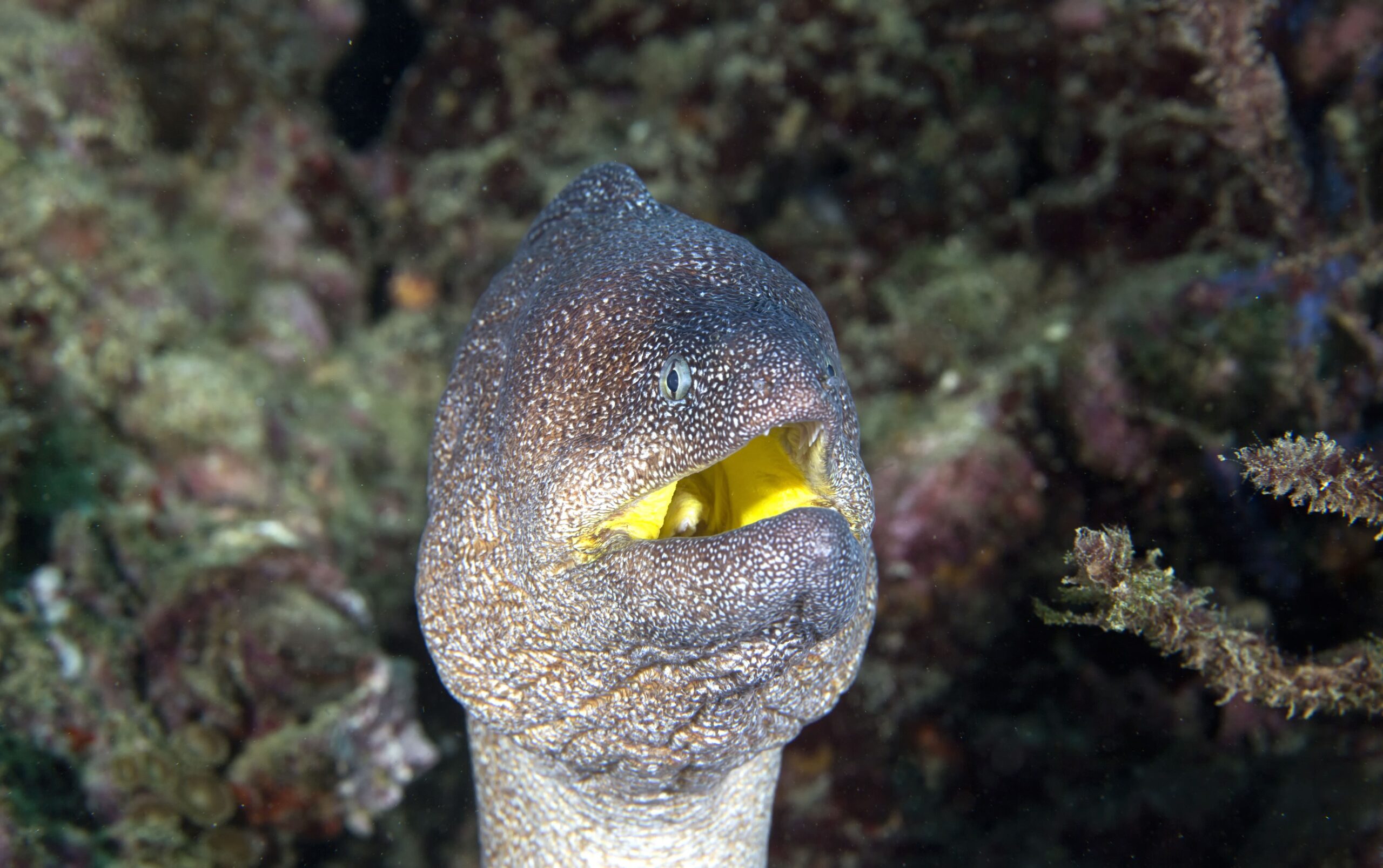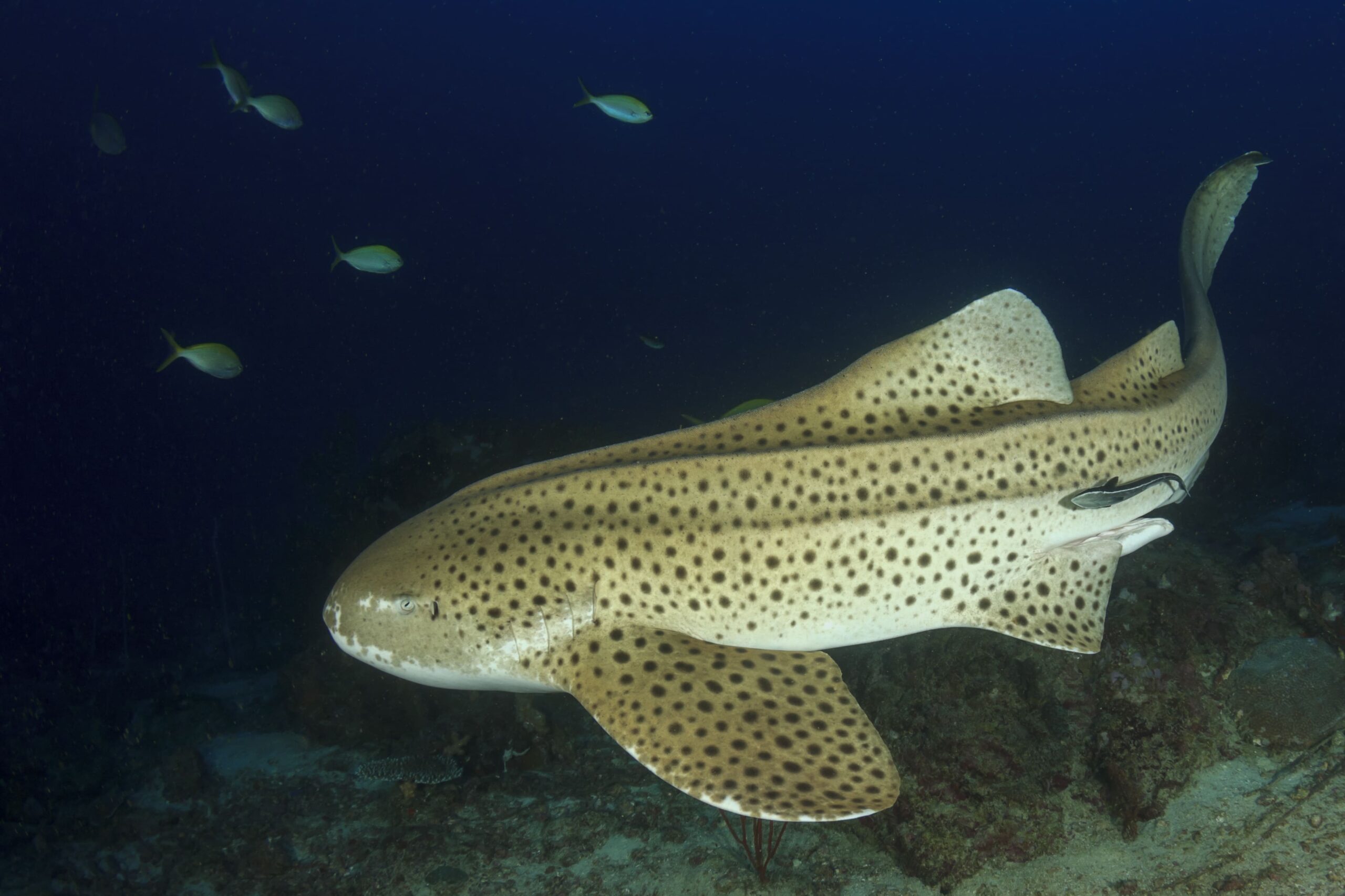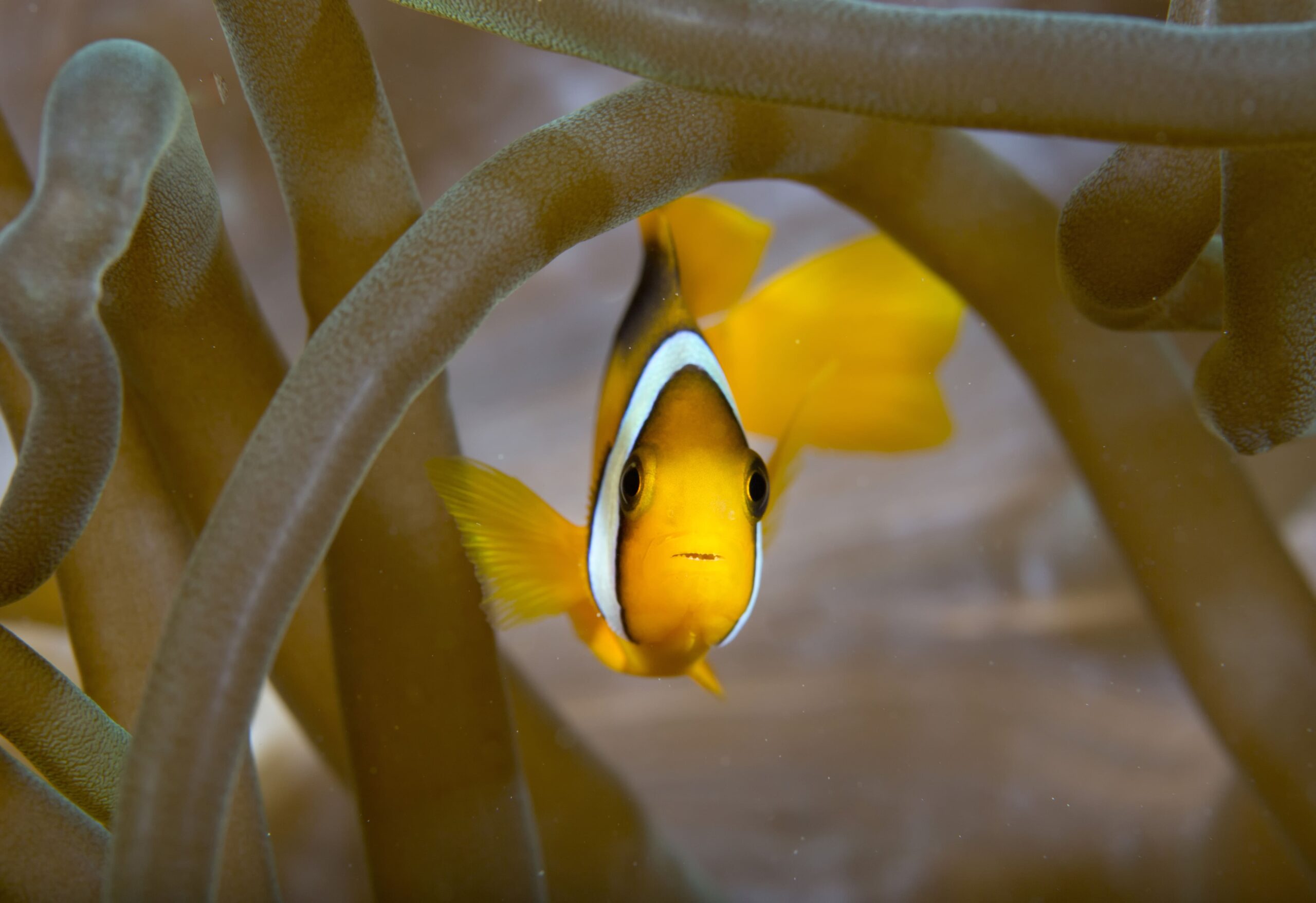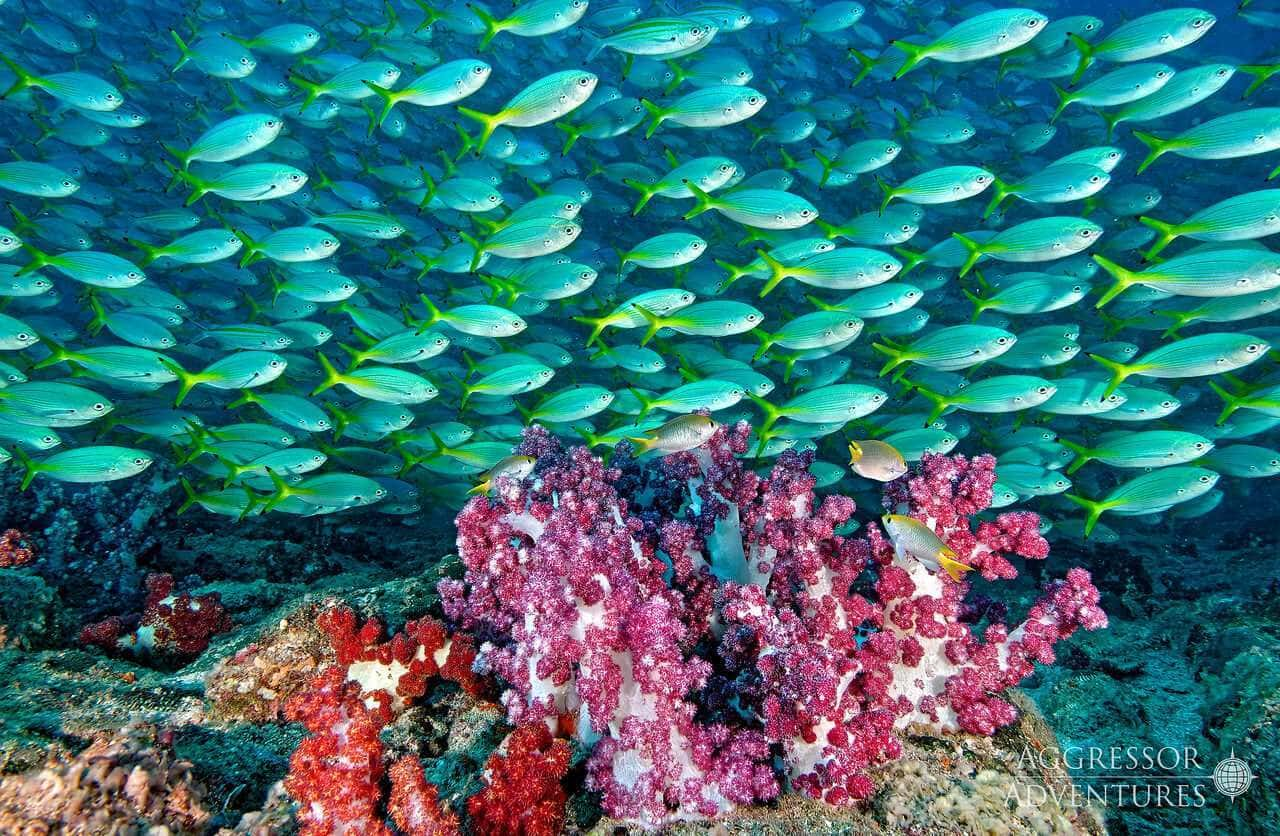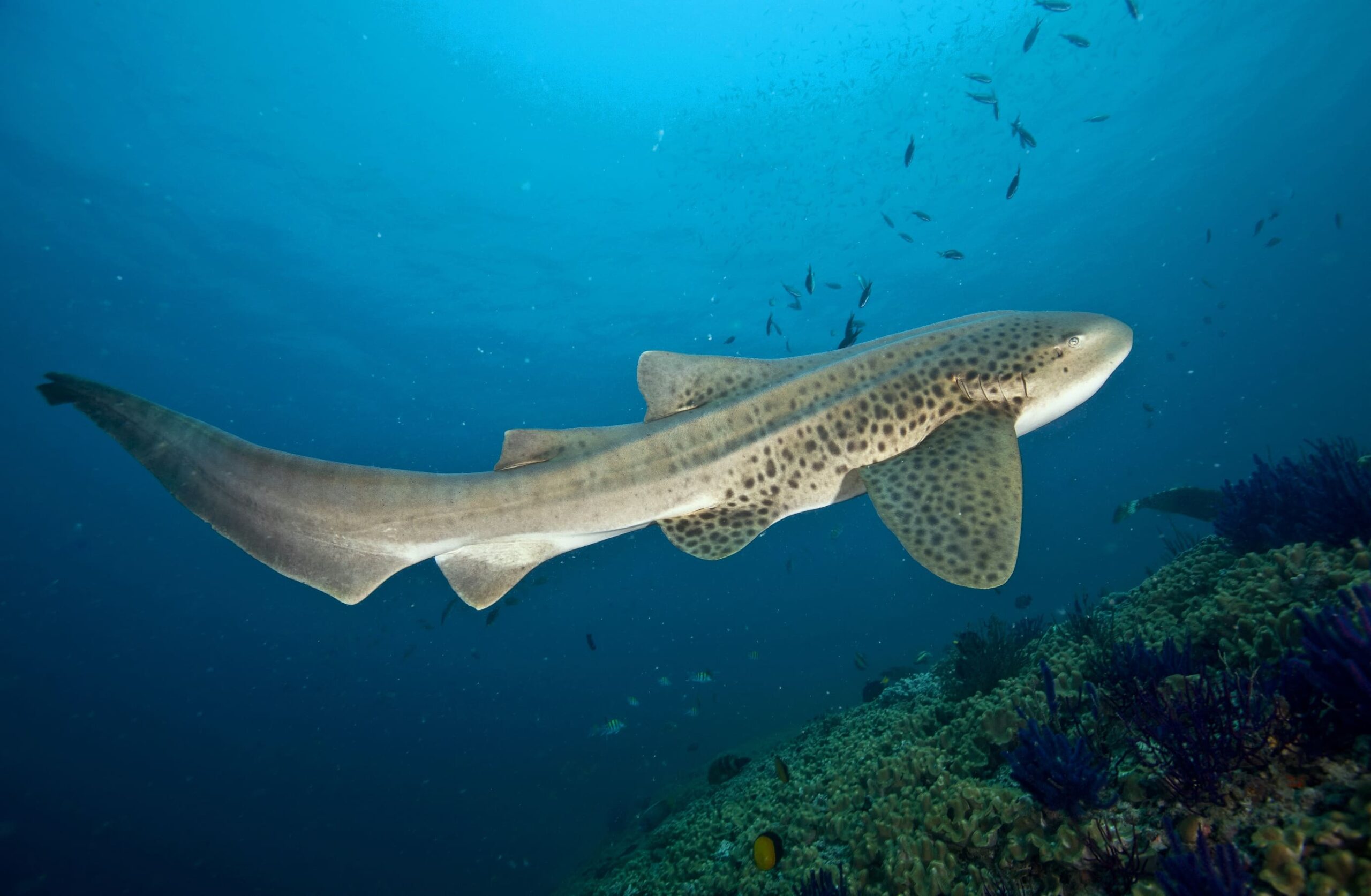While working on a Red Sea liveaboard many, many “moons” ago, we ventured out to explore most of the underwater treasures that were within our reach … but, Oman is a destination we missed. If you’ve dived all the hot spots and are seeking something new & different, Oman could be the answer. You’ll find the land itself exotic and the diving rich in corals, fish & pelagics, The water is notoriously rich in nutrients, making wide-angle phtography a challenge
Although not in a position to speak personally about the diving here, I can tell you what friends and colleagues have reported, which is that that corals are super healthy and the schools of fish (mainly big fish) are still enormous. Everyone admits, however, that the diving here is best for divers who aren’t looking for perfect photo ops, particularly wide-angle shots. The water is so rich in plankton and other nutrients that you’re unlikely to capture fabulous shots of the schools of barracuda and jacks swirling around you… or of the humpback mothers & calves. Just let yourself be carried away by the experience




